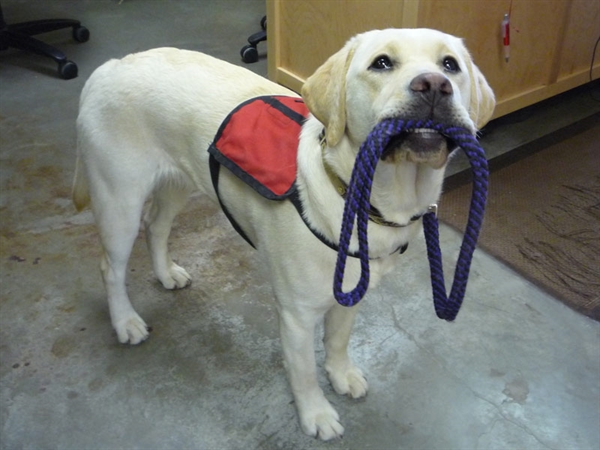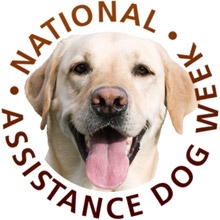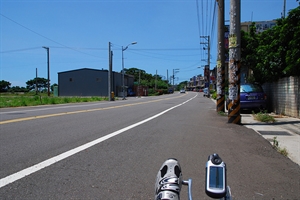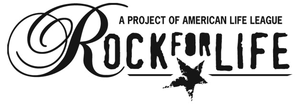Assistance Dog Week on August, 2024: any one know the stages of dogs pregnancy?
Assistance Dog Week 2024. Assistance Dogs Learn more about service dogs and Animal Assisted Therapy.
As an Amazon Associate I earn from qualifying purchases.

Over ninety-eight percent of all dogs deliver their puppies without assistance or complications. But when our beloved pet or a sheltered stray is set to deliver puppies it is comforting to know that things are proceeding without hitches and on schedule. Here are some of the things that should happen as your dog begins to deliver her puppies.
Just Before Labor Begins: canine labor pregnant birth dog puppies
Pregnancy in dogs last approximately 63 days (56-69 days). Toy breeds may deliver a week earlier while large breeds often deliver later. Two weeks before your dog’s due date, begin to take its temperature at noon. Purchase a rectal or oral thermometer but use it rectally. You can lubricate it with margarine or KY jelly and insert it about an inch. Leave it in place for three minutes. Your dog’s temperature should be between 101 and 102.5 Fahrenheit. When the pet’s temperature drops below 100F she should deliver the pups in less than twenty-four hours.
Stage One of Labor:
During the first stage of labor the cervix begins to dilate and uterine contractions begin. These contractions are painful and perplexing to the dog. She will appear quite uncomfortable and restless - pacing, shivering and panting. She probably will not eat and she may even vomit. Some dogs whine persistently. Others occupy themselves building a nest. Uterine contractions, although occurring, are not as easy to see as in humans. This is the longest stage of labor. It generally lasts six to eighteen hours. By the end of this period the dog’s cervix will have completely dilated for the puppies to pass. During this period keep the mother’s environment quiet and calm. I usually shut them off in a darkened area such as the bathroom.
Stage Two of Labor:
During the second stage of labor uterine contractions begin in force. As this stage progresses the placental water sacks break and a straw-colored fluid is passed. Placentas are expelled after each puppy or sporadically during labor. Pups usually appear every half-hour or so after ten to thirty minutes of forceful straining. As the pups deliver, the mother will lick the puppy clean and bite off the umbilical cord. It is important to let the mother do this, if she will, because through this process she bonds with her puppies and learns to recognize them as her own. The rough licking of the mother stimulates the puppies to breathe and improves their circulation. The mother will probably eat some of the afterbirths. If the bitch does not tear away the sac and lick the pups to stimulate respiration, the owner should tear the sac open, clear all fluid away from the pup's nose and mouth, and vigorously rub the pup to stimulate breathing.
It is not uncommon, however, for the mother to take rests during labor and up to four hours can pass between some puppies. If more than four hours have passed without a puppy and you are certain more puppies are present take the dog to a veterinary hospital. Also seek assistance if the mother strains forcefully for over an hour without producing another pup. If you see the rear legs of a puppy protruding from the dog’s vagina you can assist the mother by gently pulling the puppy in a downward and rearward arcing motion. You must do this very gently because puppies are fragile and easily hurt. It is normal for many puppies to be born rear feet first or breach. When a mother dog is stuck in incomplete labor the first thing I do is administer oxytocin and calcium to stimulate uterine contractions. If the puppies are too big to pass through the birth canal or the oxytocin fails to induce successful labor, I perform a cesarean section on the dog.
Stage Three of Labor:
The concept of a third stage of labor is borrowed from human labor terms. It is a very indistinct period in dogs. Once all the puppies have been born the dog enters this third stage of labor during which time the uterus contracts fully, expelling any remaining placenta, blood and fluid.
Midwifery:
After thirty-two days of pregnancy the mother’s appetite will begin to increase. She should begin to eat about twice as much as she used to. When the puppies come and she is producing milk, her food consumption should be about three times as much as it was before her pregnancy.
Purchase a name brand puppy chow to feed her with during these periods. If you do so, there is no need to give her supplements of any kind. There is no need to restrict the mother’s normal exercise but intensive exercise or work training should be curtailed.
Around the forty-fifth day, bring the pet in to be examined by a veterinarian. At this time the vet
will be able to palpate the puppies and give you an indication of how many to expect. If you need to know earlier, then have an ultrasound examination performed about the twenty-fifth day.
Blood progesterone levels can be tested about day 34 to confirm pregnancy.
The puppies will be born still covered by the amniotic membrane. This membrane must be removed from the puppy’s face in order for it to breathe. Most momma dogs are very attentive to the newborn puppy and lick and tear the membrane off. If they are not or you just don’t have the patience to wait, assist the dog in doing this. Peel the membrane away and remove mucous from the puppy’s mouth and nose with a soft towel. Tie a piece of dental floss or thread around the umbilical cord about an inch from the puppy’s belly button and cut the cord distal to the knot.
Serious Problems:
If the mother fails to go into labor within twenty-four hours after her body temperature drops to below 100F you should take the dog to a veterinarian. Do this also if you have calculated that more than 69 days have passed since the dog was bred.
Some dogs will suffer milk failure or insufficient milk before their puppies are weaned. This occurs in older dogs as well as dogs that have another concurrent health problem such as eclampsia, mastitis or systemic disease. These dogs need to be taken directly to a veterinarian the puppies supplemented or raised by hand. Signs that milk is inadequate are thin or lean puppies that cry consistently suck objects around them (or each other) and do not sleep.
It is normal for the mother to run a low fever during the two days after giving birth. I become concerned if the fever is over 102.8, if the dog is drinking excessive water or if she is depressed. These may all be signs of a retained placenta (or puppy) or a uterine infection.
It is normal for the dog to have a copious vaginal discharge following birthing. This discharge normally has rusty reddish or greenish brown appearance. I become concerned when the discharge is pus-like or has a strong odor. This can also be a sign of retained placenta and uterine infection (metritis). Normal cleansing of the uterus can last as long as eight weeks.
Normal mother dogs are bright, alert and attentive to their puppies. She should have a ravenous appetite as she converts metabolites to milk. I become concerned if the mother shows any signs of listlessness or depression. She also needs to visit a veterinarian if she is not attentive to her puppies.
Check the mother’s milk flow. It should flow with only the slightest of finger pressure.
Eclampsia or Milk Fever:
Eclampsia is actually a glandular problem in which the parathyroid gland does not secrete sufficient calcium-releasing hormone. When it does occur, this problem happens just before or within 3-4 weeks after welping. Milk fever is an acute, life-threatening condition. It is most common in small breeds with large litters. Mother dogs become disoriented, stiff, nervous and restless. They loose interest in her puppies. In severe cases they will have muscle spasms, seizures and be unable to walk. The mother may run a fever and have a rapid heart rate. . This problem results from low blood calcium as the mother’s body prepares to produce calcium-rich milk. I treat it by administering intravenous 10% calcium gluconate at 0.25-0.75ml/pound/hour. Affected dogs return to normal in fifteen minutes or less. Then I either wean the puppies or place the mother on a calcium supplement for the remainder of their lactation. Giving calcium supplements during pregnancy is not helpful and may actually cause the problem to reoccur during future pregnancies.
Mastitis or Breast Infection:
The normal canine breasts of mother dogs are soft, warm and enlarged. They should never be red, hot, painful and hard. Hard painful breasts are signs of infection. Dogs with this condition are reluctant to let the puppies nurse and when they do little milk is produced. As soon as I identify a dog with this condition I remove the puppies and hand feed them. Hot packs on the affected breasts help draw down the infection. I place the mother dog on antibiotics and limit her water supply to dry up her milk as quickly as possible.
Hypoglycemia or Low Blood Sugar:
This condition is easily confused with eclampsia. It is primarily a problem in small breeds. The signs are disorientation, weakness, subnormal temperature and low blood sugar analysis. I treat it by administering intravenous dextrose solution. Recovery is very rapid. I often give some dextrose at the same time I treat with intravenous calcium for eclampsia since the two problems often occur together

How can you tell if your dog is about to have puppies?
Pregnancy in dogs last approximately 63 days (56-69 days). Toy breeds may deliver a week earlier while large breeds often deliver later. Two weeks before your dog’s due date, begin to take its temperature at noon. Purchase a rectal or oral thermometer but use it rectally. You can lubricate it with margarine or KY jelly and insert it about an inch. Leave it in place for three minutes. Your dog’s temperature should be between 101 and 102.5 Fahrenheit. When the pet’s temperature drops below 100F she should deliver the pups in less than twenty-four hours.
Stage One of Labor:
During the first stage of labor the cervix begins to dilate and uterine contractions begin. These contractions are painful and perplexing to the dog. She will appear quite uncomfortable and restless - pacing, shivering and panting. She probably will not eat and she may even vomit. Some dogs whine persistently. Others occupy themselves building a nest. Uterine contractions, although occurring, are not as easy to see as in humans. This is the longest stage of labor. It generally lasts six to eighteen hours. By the end of this period the dog’s cervix will have completely dilated for the puppies to pass. During this period keep the mother’s environment quiet and calm. I usually shut them off in a darkened area such as the bathroom.
Stage Two of Labor:
During the second stage of labor, uterine contractions begin in force. As this stage progresses the placental water sacks break and a straw-colored fluid is passed. Placentas are expelled after each puppy or sporadically during labor. Pups usually appear every half-hour or so after ten to thirty minutes of forceful straining. As the pups deliver, the mother will lick the puppy clean and bite off the umbilical cord. It is important to let the mother do this, if she will, because through this process she bonds with her puppies and learns to recognize them as her own. The rough licking of the mother stimulates the puppies to breathe and improves their circulation. The mother will probably eat some of the afterbirths. If the bitch does not tear away the sac and lick the pups to stimulate respiration, the owner should tear the sac open, clear all fluid away from the pup's nose and mouth, and vigorously rub the pup to stimulate breathing.
It is not uncommon, however, for the mother to take rests during labor and up to four hours can pass between some puppies. If more than four hours have passed without a puppy and you are certain more puppies are present take the dog to a veterinary hospital. Also seek assistance if the mother strains forcefully for over an hour without producing another pup. If you see the rear legs of a puppy protruding from the dog’s vagina you can assist the mother by gently pulling the puppy in a downward and rearward arcing motion. You must do this very gently because puppies are fragile and easily hurt. It is normal for many puppies to be born rear feet first or breach. When a mother dog is stuck in incomplete labor the first thing I do is administer oxytocin and calcium to stimulate uterine contractions. If the puppies are too big to pass through the birth canal or the oxytocin fails to induce successful labor, I perform a cesarean section on the dog.
Stage Three of Labor:
The concept of a third stage of labor is borrowed from human labor terms. It is a very indistinct period in dogs. Once all the puppies have been born the dog enters this third stage of labor during which time the uterus contracts fully, expelling any remaining placenta, blood and fluid.

dog walker assistance?
Funny you should ask about dog walking, because my husband and I were talking about it. Due to my stroke and my husband's leg problems (he needs to have surgery) none of our dogs have gone for a run the past several months.
We looked into it and found one that charges $75 for a 45 minute walk five times a week, including travel time. Which is too expensive for us. I'd be willing to pay around $20 an hour, provided you would supply references that will be checked out, have no objection to us talking to your parents, your ability to follow instructions (don't take the dog off leash means don't take the dog off leash even in an enclosed area) and probably most important, how physically fit you are. I want my dog to come back home panting and worn out. That means a brisk trot alternating with a flat out and out run.
Dog walking is work, not fun.


















